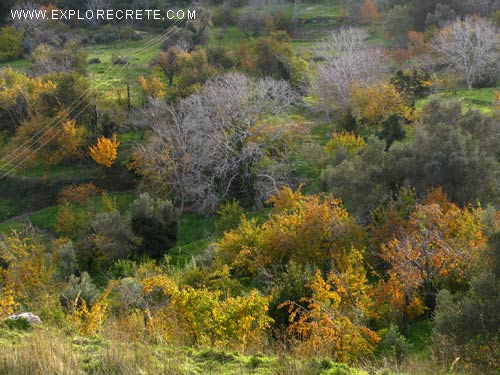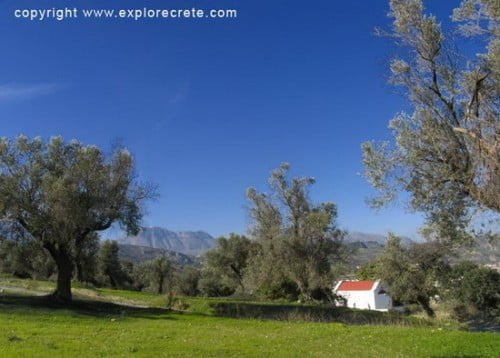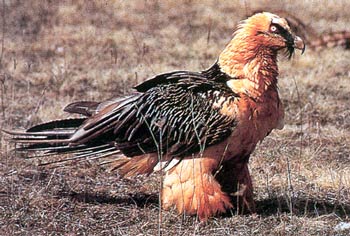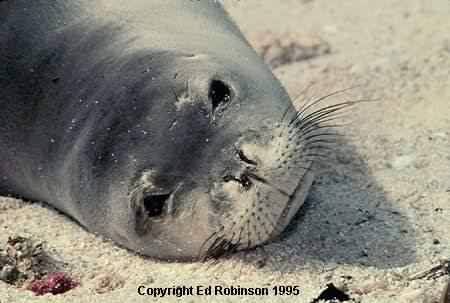The Flora of Crete
The flora of Crete consists of trees and plants, which can also be found in other regions of Greece and the wider Mediterranean area. Out of the 2,000 species which can be found in Crete, 160 of them are endemic to the island (i.e. found nowhere else). This is easily explained as Crete is an island and its ecosystem is isolated due to the surrounding sea.
Compared to periods of the past, the vegetation of today has been diminished to a large degree. Mountains that previously had lush vegetation such as Psiloritis (Mountain Ida or Idi) are today almost bare. The few wooded areas remaining on the island, can be found at:
- Mostly on the White Mountains range in west Crete. The wooded Samaria Gorge can be considered as an image from the past of Crete.
- The south flanks of Mt Idi in Vorizia, Kamares and Zaros area
- The south flanks of the Dikti Mountains in Selakano and Pefkos in Vianos area
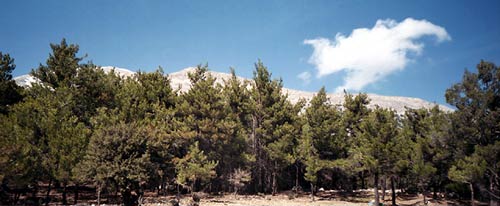
Common trees in Crete are the tamarisk (Tamarix cretica), oak-, chestnut-, pine-, cypress– and the evergreen plane tree (Platanus orientalis). This grows close to water and it can grow up to 30 meters high. It is also quite often found in the village squares, offering its shade to people. A huge plane tree, or platanos in Greek, can be seen at Topolia village in west Crete on the road from Kissamos (Kastelli) to Elafonissi. It is so huge that the local community has declared it a “Monument of Nature”.
Another famous plane tree is the one in Krasi village on the way from Iraklion to Lassithi Plateau (the trunk of which has the largest circumference of any plane tree in Europe). Undoubtedly, the most famous plane tree is the one in Gortyn, which according to mythology, was where Zeus “married” Europe after he kidnapped her from Asia Minor. Look for it when you visit this magnificent archaeological site in south Iraklion area.
Of singular natural beauty is the palm-forest of Vai, where Phoenix theophrasti grows, a variety unique to Crete. Another famous palm forest is the Preveli one. A much smaller and less known one exists at Agios Antonios in south Iraklion district.
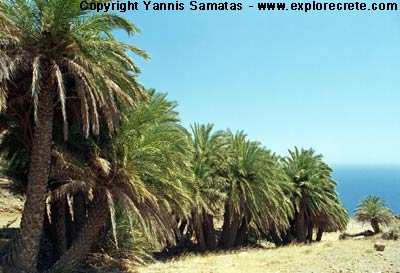
Most tourists visit Crete during the hot summer months. This is the period of the year that the island looks like a desert: brown hills, dry bushes and lots of dust. Crete is totally different in the winter and spring. New grass and wild greens have grown and Crete is a green island. People who have known Crete in the summer won’t recognize it in the winter.

In April and May Crete is covered by wildflowers: poppies, daisies, camomile, iris (Iris cretica), gladiola (Gladiolus italicus), tulips (Tulipa orphanidea), hyacinth (Muscari commosum) and various species of Cretan orchids.

In shady areas white cyclamens (Cyclamen creticum) can be found. Unfortunately cyclamens are considered an endangered species, so when you see them do not cut them, just take a photo of them.
Herbs like thyme, sage and rosemary are very common in Crete and they have been used for thousands of years for culinary and medical purposes.
Dittany (Origanum dictamus), dictamos or erontas in greek, is another Cretan herb. It is said that the wild goats of Crete ( kri-kri, an ibex endemic to Crete) look for it and eat it when they injure themselves as it helps in the healing of their wounds. Dittany grows wild in steep cliffs and it is very good for stomach-ache. Today it is also cultivated in Vianos area in the villages of Xeniako, Milliarado and Katofigi.
No page about the Flora of Crete can be complete if the evergreen Olea Europea is not mentioned. Olea is the common olive tree, you will see myriads of it on Crete and It is part of the history of Crete and Greece.
LINKS:
© explorecrete.com All Rights Reserved. Reproduction or copying without permission is prohibited.

